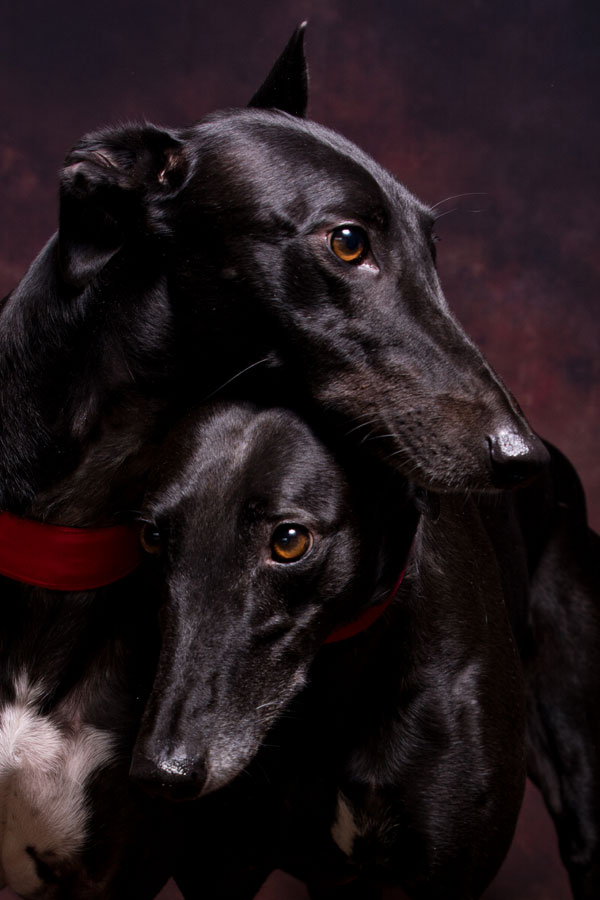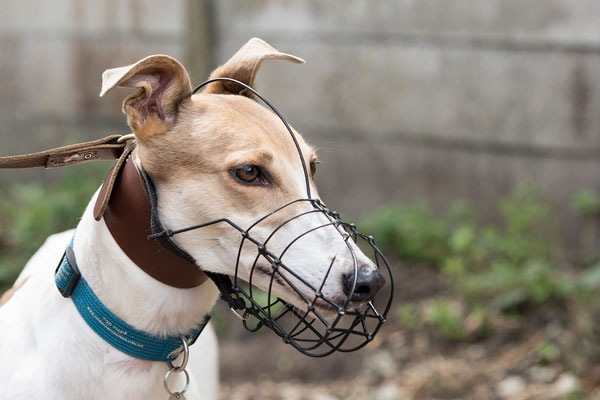Chapter 1 – Around the house
 The first few days
The first few days
When you first take your dog home, let it find its own way around the house; give it time and space to adjust to its new surroundings. Don’t make too many demands on it – most of these dogs have never been in a home environment before and haven’t encountered such things as stairs, vacuum cleaners or slippery laminate flooring. If your dog finds it difficult to walk on your floor, invest in some rubber-backed runners that will allow it to negotiate your house safely. These dogs take most things in their stride but if yours is panting and pacing, don’t worry – leave it to settle in its own time, be patient and try to stay as relaxed as possible. It is important in this initial period not to make too much fuss of the dog – however tempting that may be. The dog has to learn how to cope spending time in its own company if it is ever to be left alone.
Toilet training
All you need to concentrate on to begin with, is the toilet training. Treat it as a puppy – put it out every couple of hours, praise it when it performs and it’ll soon get the hang of it. If by chance you miss your moment and it has an accident indoors, it is precisely that – an accident. Unless you catch the dog in the act (stopping it with a short sharp noise), there is no point in chastising, as the dog will not make the connection and you will end up with a confused and anxious dog on your hands. The greyhound is a sensitive breed that responds best to gentle guidance. If you find the dog has had an accident overnight, it could be because the dog is cold and can’t settle, because it hasn’t emptied itself properly last thing, or possibly because it’s been woken by the local foxes!
Equipment
 You will have been provided with most of what you need for your greyhound in the ‘homing kit’ provided by the rescue – a muzzle, collar, lead and outside coat. Additionally, you will need a water bowl (any bowl will do) and a bed. I recommend a soft bed or a double duvet, folded over, that the dog can make a warm nest out of. Your greyhound will spend much of its day sleeping in its bed (or wherever it chooses), as sleeping is what these dogs do best! As to where the dog will sleep at night – the easiest thing to do is let it decide where it feels most comfortable.
You will have been provided with most of what you need for your greyhound in the ‘homing kit’ provided by the rescue – a muzzle, collar, lead and outside coat. Additionally, you will need a water bowl (any bowl will do) and a bed. I recommend a soft bed or a double duvet, folded over, that the dog can make a warm nest out of. Your greyhound will spend much of its day sleeping in its bed (or wherever it chooses), as sleeping is what these dogs do best! As to where the dog will sleep at night – the easiest thing to do is let it decide where it feels most comfortable.
Your greyhound has nearly always shared a kennel with another dog and this could be the first time it has no company during the night.
Some will sleep quite happily away from you, seemingly untroubled. Others will need reassurance and may be better served in a corner of your bedroom, at least to begin with.
Children
If you have children, the golden rule is (and this applies to any breed of dog) – when the dog is in its bed, it is to be left alone. The dog has to have somewhere it can retreat to if it feels the need. Again, if the children are young, it must be impressed upon them that the dog is not a toy or a piece of furniture. If it appears to be asleep – leave it be, even if not in its bed. Greyhounds have a disconcerting habit of sleeping with their eyes open, so the dog whose fur you bend down to stroke may well be in a deep sleep; call the dog’s name and wait for it to respond before you touch it.
Never leave a dog and a young child together unsupervised.
Chewing
As far as the dog is concerned, it is now living in a much bigger kennel but a kennel nonetheless and anything in that kennel belongs to it. Don’t leave things around that you don’t want to risk being chewed – the upside of this is that it might teach your children to tidy up after themselves! Do be aware that the greyhound’s reach is freakishly long – food on kitchen counters or on coffee tables is an open invitation until it learns the rules of the house.
Stairs
Stairs can pose a problem for greyhounds as they’ve never encountered them before. Some take to them with no difficulty, others need a bit of encouragement, which is where another dog showing them the ropes can help. Some might need to be tempted by a high value treat or encouraged with a lead /harness and an additional helper. Encourage your greyhound to take it slowly and calmly. Some will find their way upstairs but need some assistance getting down (always a scarier proposition). If your new dog does not want to attempt stairs and is quite content to be left downstairs, all to the good but if the dog needs to tackle them, there are various ways of doing it depending on the temperament of the dog. The most important thing, however, is not to overwhelm the dog and have it become terrified of “The Mountain of Doom”. Approach the task with the expectation of panicky failure on the part of the dog and you will probably find that it becomes a self-fulfilling prophecy. A cheerfully calm state of mind and tone of voice are a good starting point.
Security
Always check where the dog is before opening the front door, or a side gate. Write yourself a note and stick it on the inside of the door, if necessary, especially if you have a busy household. Greyhounds are like eels and can slip past you and out onto the road frighteningly quickly. The same applies to getting them out of cars – always have a firm hold of the collar or lead before opening the car door properly, or if you have a passenger with you, have them stay in the car and hold the dog’s lead while you open the door from outside and then they can pass the lead over to you.
The law requires your dog to be microchipped and wearing a tag.
Leaving your greyhound alone
When leaving your dog for the first time, just pop out for a moment before returning. Don’t make a fuss before going out, or coming back. Then gradually increase the time you stay away for. Perhaps leave the radio on. Before you leave, make sure your dog’s needs are met – that it has been fed, walked and toileted.
To be left “home alone” can be a scary prospect for some dogs after the hustle and bustle of kennel life and it’s best to ease them into it. Any accidents, chewing or howling while you’re out, are signs of distress. Don’t punish – just go back a stage and try again. Another possibility is crating but this is not a short cut – I suggest you get more advice if you are considering this .
